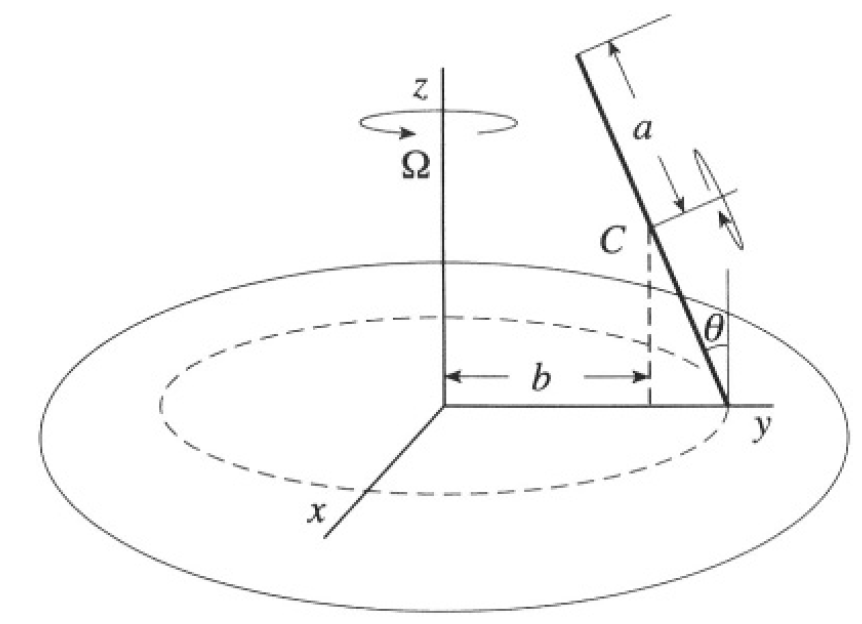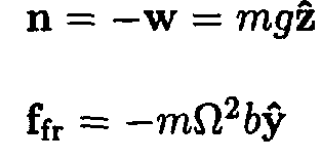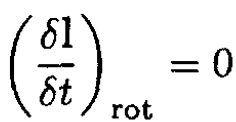
Rolling Coin
 المؤلف:
Sidney B. Cahn Boris E. Nadgorny
المؤلف:
Sidney B. Cahn Boris E. Nadgorny
 المصدر:
A GUIDE TO PHYSICS PROBLEMS
المصدر:
A GUIDE TO PHYSICS PROBLEMS
 الجزء والصفحة:
part 1 , p 24
الجزء والصفحة:
part 1 , p 24
 1-8-2016
1-8-2016
 1687
1687
Rolling Coin
A coin idealized as a uniform disk of radius a with negligible thickness and mass m rolls in a circle. The center of mass of the coin C moves in a circle of radius b and the axis of the coin is tilted at an angle θ with respect to the vertical. Find the angular velocity Ω of the center of mass of the coin (see Figure 1.1).

Figure 1.1
SOLUTION
We can use the standard method of Euler equations to solve this problem. However, since the coin has a symmetry axis, it is easier to use a frame of reference rotating with angular velocity Ω, corresponding to the rotation of the center of mass of the coin. Rolling without slipping implies that the velocity of the point of contact with the table should be zero, and therefore
 (1)
(1)
where ω is the angular velocity of rotation of the coin around its axis (see Figure 1.2). We have in this frame
 (2)
(2)

Figure 1.2
where n is the normal reaction, and w is the weight. From (2), we can find the torque N relative to the center of mass of the coin:
 (3)
(3)
In a non-inertial frame rotating with an angular velocity Ω, we can write
 (4)
(4)
In the rotating frame

Choose the moment of time when one axis is horizontal and in the same direction as  (
(  in Figure 1.2). Since the axis of this frame coincides with the principal axis, the tensor of inertia is diagonal
in Figure 1.2). Since the axis of this frame coincides with the principal axis, the tensor of inertia is diagonal

To calculate this tensor, we used I1 = (1/2)ma2 for the moment of inertia of the disk about its symmetry axis and also the fact that for a body of negligible thickness I1= I2 + I3. On the other hand  where
where

Taking N from (4) we have
 (5)
(5)
From (1)
 (6)
(6)
Comparing (5) with (3) and using (6) we obtain
 (7)
(7)
 (8)
(8)
 (9)
(9)
 الاكثر قراءة في مواضيع اخرى
الاكثر قراءة في مواضيع اخرى
 اخر الاخبار
اخر الاخبار
اخبار العتبة العباسية المقدسة


